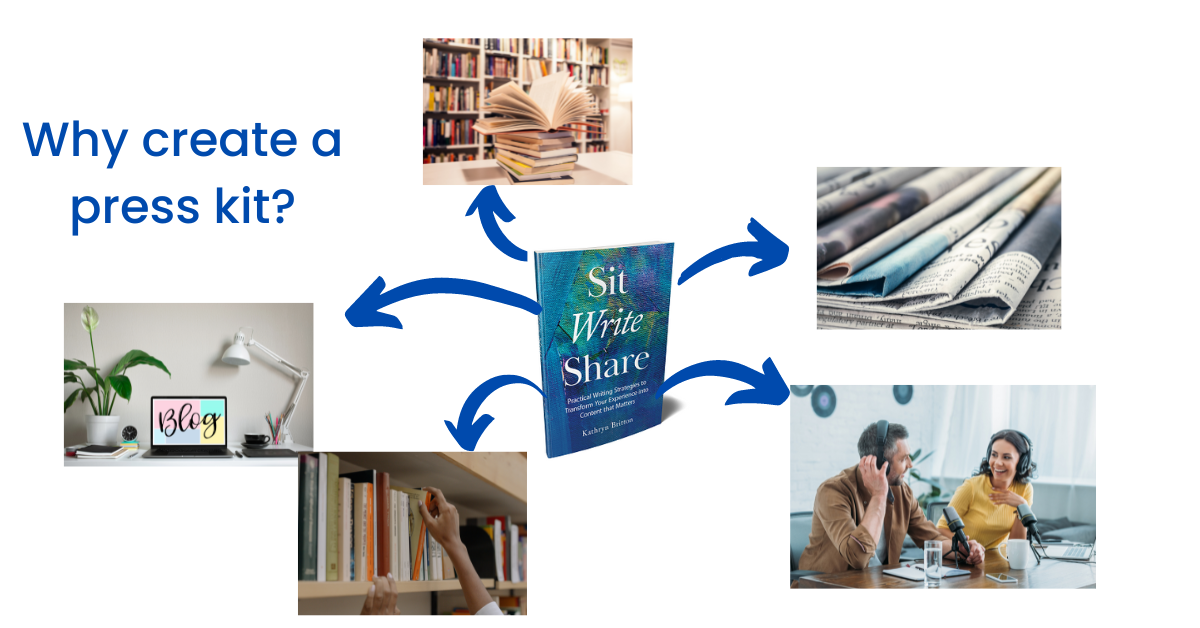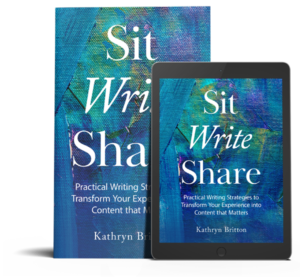What Comes After the Book Launch?
As the excitement of the launch dies down, what do you do to attract the attention of your ideal readers? How do you show up on their book-buying radar screens?
While thinking about these questions to market Sit Write Share, I flipped through the latest Stanford Magazine and found the Biblio File with cover images of books published by Stanford graduates. Hmm! I have graduated from three universities, and university graduates are perhaps more likely than the general public to be interested in writing and getting published. How could I get my book to show up in their book lists?
On the Stanford Magazine contact page, I found a section called Submit Your Book. When I expanded it, I found the sentence: “Please send a review copy of the book and a press kit to [address]”
That gave me pause. “What’s a press kit?”
Time to find out. After searching online, I felt slightly intimidated, but then I remembered a story about my uncle. He was a cattle rancher who had to sell his property after a heart attack told him he could no longer run it on his own with his dog, not matter how smart the dog. A church member asked him if he’d ever done carpentry. When he responded, “No, but I can learn most anything,” they started a 5-year partnership building and renovating houses together.
With my uncle in mind, I decided I could learn how to create press kit. The Internet is full of wonderful resources for learning new skills.
What IS a press kit?
A press kit is a file or collection of files that an author can give potential reviewers, bloggers, interviewers, and the media, anyone who wants to know more about the book without having to read it from cover to cover. It might help a podcast host figure out interesting questions or a local newspaper mention the book. A blogger might use it to write an article about the book. A local bookstore might consult it before deciding to order the book. I could send it to local libraries to ask them to order the book. Clearly university magazines can use it to decide whether a book would be interesting to their magazine readers.
What does a press kit look like?
When I’m doing something new, I like to start with an example and then modify it to fit my purpose. I figure, “Why use my own creativity inventing a new format if I can find one that already works?” But I guess no one wants to publish their press kit for the entire universe to see. I looked several times without finding an example press kit that I could emulate.
There are multiple articles on the Internet that discuss possible content. In case you’d like to read further, I’ve included links to these sources on the Sit Write Share Resources for Share Experiment 16.
One writer said that a press kit is not one file. It’s a directory of files on a service such as Google Drive or Dropbox that can be shared with an interested party.
Another writer mentioned having a table of contents, so I assume that writer was thinking of a single file.
I decided to go both ways with a directory of files on Dropbox that included a single file that has all the sections in one document with a table of contents at the beginning. So far, I’ve sent the single-document link to university magazines, but I could send the folder link to someone else. One advantage of the folder is that it is easier to send images as JPEG or PNG files, which reviewers can more easily pick up and use on a web site or in print publication.
As I mentioned in the launch blog post, I like using Dropbox because I can change the contents of the folder or upload new versions of a document without having to resend the links.
What belongs in a press kit?
Here are the elements of my press kit. I drew ideas from all the articles I read. Some of the documents mentioned below are very short.
- Book details, including ISBN, publication date, genre, price, number of pages, synopsis, formats, and where available in the world. I included the books2read link, which includes links to all the services that sell the paperback and eBook online.
- Five key ideas in the book. It’s always interesting to boil down a book contents to a page or less.
- Author bios tailored for different institutions. In my bio for Stanford, I mention the name I used when I was an undergraduate, that I was an English major, and that I am a Phi Beta Kappa member. In my bio for Penn, I mentioned earning a Master of Applied Positive Psychology degree from Penn in the first year of the program. I haven’t yet made the version for the University of North Carolina.
- Author contact information: In addition to the usual email and phone information, this document includes social media links and a link to the book web site.
- A short video in which I announced the paperback version of the book. It’s an MP4 file. In this video less than 1 minute long, a potential interviewer could see that I speak clearly and reasonably slowly.
- A book sample. Mine includes the cover, the title page, the table of contents, and the introduction.
- A list of other publications by the author. This is not an exhaustive list, but I tried to make it show the range of writing that I’ve done.
- Cover images in both PNG and PDF formats. The latter shows front and back cover.
- Information about endorsements, including number and geographic range
- Post publication reviews including a link to my Kirkus review. This document identifies how many Amazon and GoodReads reviews the book had received as of a certain date. It also includes 4 or 5 sample reviews of varying lengths.
- Eight interview questions with sample answers. This could be a jumping off point for someone planning to interview me.
Final Thoughts About Press Kits
First, I wish I had pulled this together before I launched the book. Then I could have sent earlier versions of the book to my universities and speeded up consideration. But it’s not too late, even though my book has been out for 3 months.
Second, I don’t yet know what the press kit will do for me. I have only just started sharing it with potential podcast hosts and book bloggers. More later when I know how this experiment worked out.

